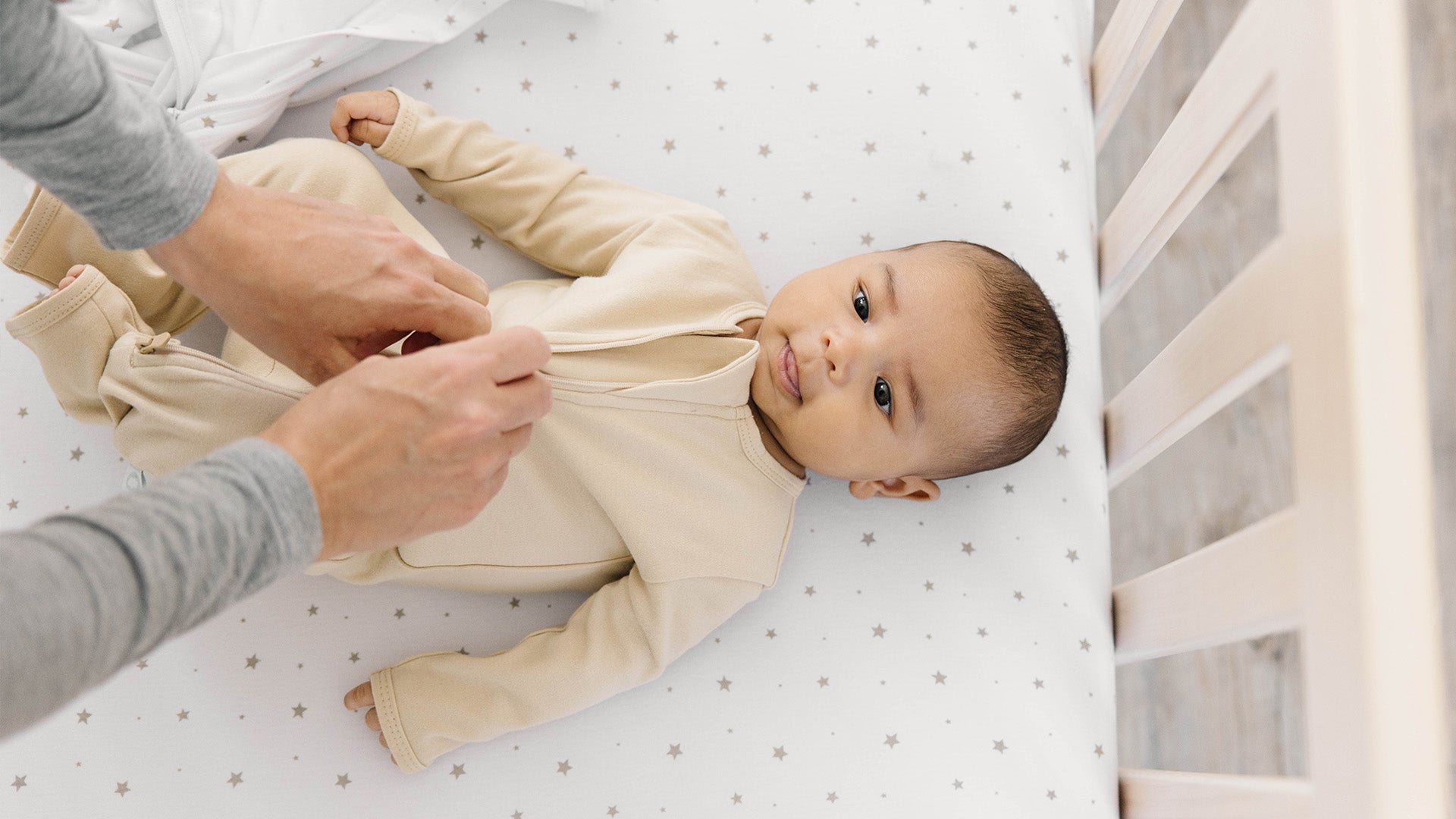Tips for Moving Your Little One Out of the Crib
Transitioning your toddler from a crib to a bed can be an exciting milestone for both you and your little one - but it can also feel overwhelming. Read on for tips and tricks on how to make the transition easier on you both.
When should a child transition from crib to bed?
Although there isn't a specific age when a child should transition from a crib to a bed, most children are ready to transition between the ages of 18 months and 3 years old.
How do I transition my baby from crib to bed?
Transitioning your child from their crib to a bed can feel like a daunting task. We’re not going to lie, making sure your child is safe and comfortable while ensuring you’re all still getting enough sleep might not be easy at first. Here are some tips and tricks for making that transition as smooth as possible.
How do I know my child is ready for a toddler bed?
The transition from crib to bed is just as monumental for you as it is for your little one. It may be difficult to know exactly when the right time to make that transition is, but here are some signs of readiness you can look out for:

How do I keep my toddler in bed after transitioning from crib?
Transitioning from a crib to a bed is a huge change for toddlers and it may take some time for them to adjust to the new sleeping arrangement. Before we discuss how the heck to actually keep them in bed, let’s talk about how you can motivate them to even want to be there.
A consistent bedtime routine is important to help your toddler feel calm and relaxed before bed, making it easier for them to actually want to stay in their new big kid bed. Include activities such as a bath, storytime, or a lullaby to signal that it's time to sleep soon. Incorporating positive reinforcement can help encourage good behavior and motivate your toddler to stay in bed. Also, make sure your toddler's new bed is comfortable and inviting to them by adding their favorite blanket or stuffed animal.
Now that they’re tucked in and comfy, what happens when they inevitably get up?
If your toddler does tend to leave their room after bedtime, you may want to consider using a baby gate to keep them contained in their room. Be sure their room is a safe space for them, making sure all outlets are covered, furniture is secured to the walls, and windows aren’t accessible. Also, make sure their room is free of choking hazards.
Toddlers that want to leave the bed may be experiencing anxieties they are running from. Change is hard for babies and adults. Try using Dreamland’s Weighted Blanket that evenly distributes weight and mimics the feeling of a hug. The gentle weight works to naturally reduce stress and increase relaxation which can give your baby the confidence and feeling of security they need to stay in their bed.
How do I teach my toddler to fall asleep on their own?
Teaching a toddler to fall asleep on their own can be a challenge, but it's an important skill to develop for their long-term sleep habits.
If your toddler is used to falling asleep with your presence, you can try gradually separating yourself from the room over time. Start by sitting next to the bed, then move to sitting in a chair, and eventually leave the room altogether.
Teaching your toddler to fall asleep on their own may take some time and patience, but consistency is key. Stick to your established bedtime routine and continue to reinforce positive behavior.
Since newborn your baby has been going through so many changes, and the toddler stage is no different. Whether newborn or toddler, weighted sleep aid products by Dreamland can reduce stress and anxiety thus promoting healthy sleep and aiding them in the self soothing process.
Can a toddler sleep with a blanket?
For toddlers who are 12 months or older, it’s generally safe for them to sleep with blankets, but parents should still take precautions to ensure the bedding is safe. The American Academy of Pediatrics recommends that infants under 12 months of age should not be placed to sleep with blankets, pillows, or any other soft bedding, in order to reduce the risk of suffocation or Sudden Infant Death Syndrome (SIDS).
For toddlers over the age of 3 or over 30 lbs, Dreamland’s Weighted Sleep Blanket can be a helpful tool in helping your child stay in their bed. This gentle 4lb weight feels like a secure and comforting hug and provides deep pressure stimulation to help naturally reduce anxiety, alleviate sensory overload, and promote healthy sleep patterns.
Bed Safety Tips for Toddlers Transitioning from Crib to Bed:
We touched on ways to keep your toddler’s room safe for them in the event they do get up from their new bed, but what can you do to ensure their bed itself is safe?
Remember, every child is different, so the transition may take some time. With patience and consistency, your child will adjust to the new bed and establish healthy sleep habits. Stress and anxiety can interfere with a good night's sleep for your baby. To help your baby fall asleep faster and stay asleep longer, shop Dreamland Baby products.


Share:
What Is Sleep Debt for Babies?
What Are The Benefits Of Bamboo Baby Pajamas?